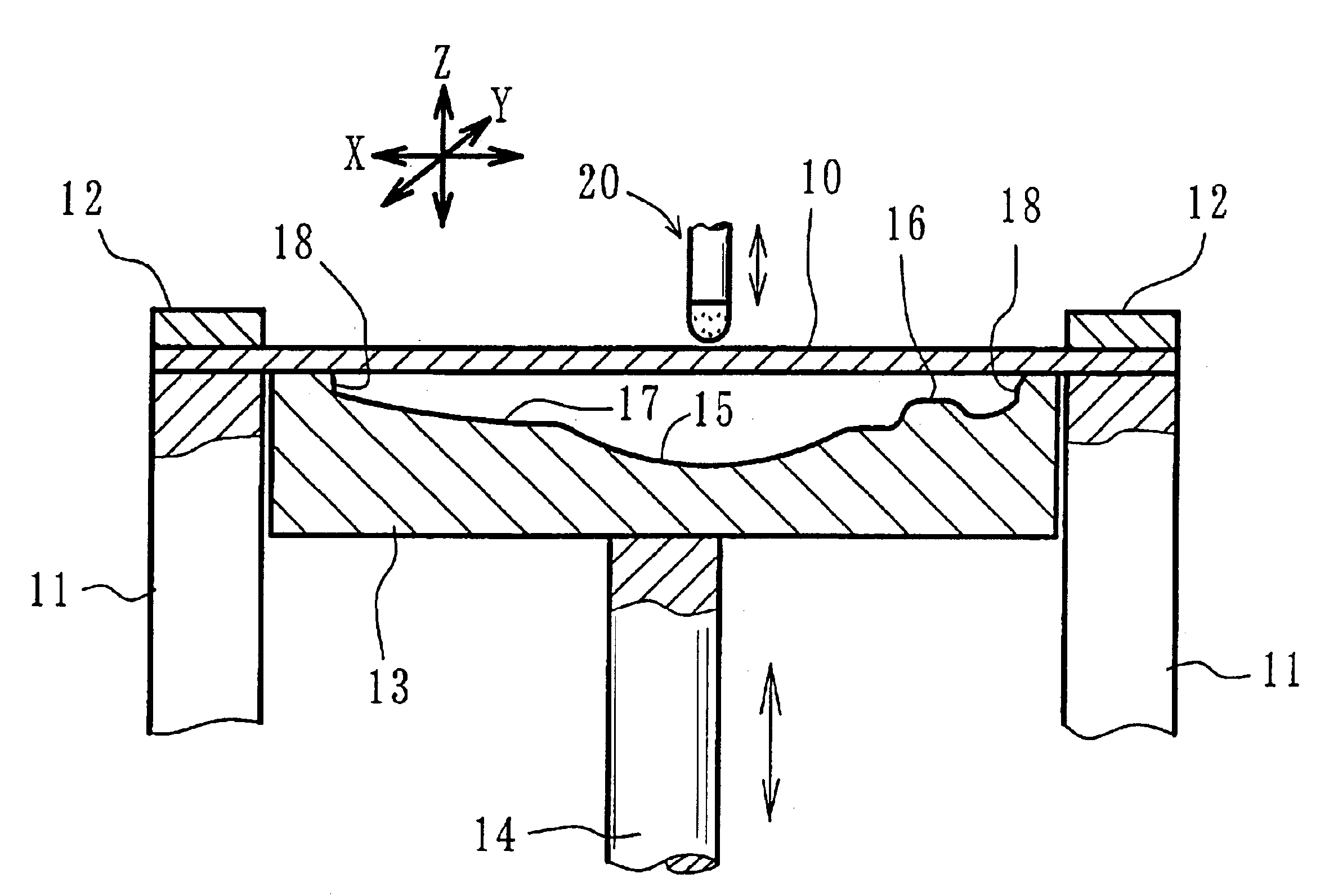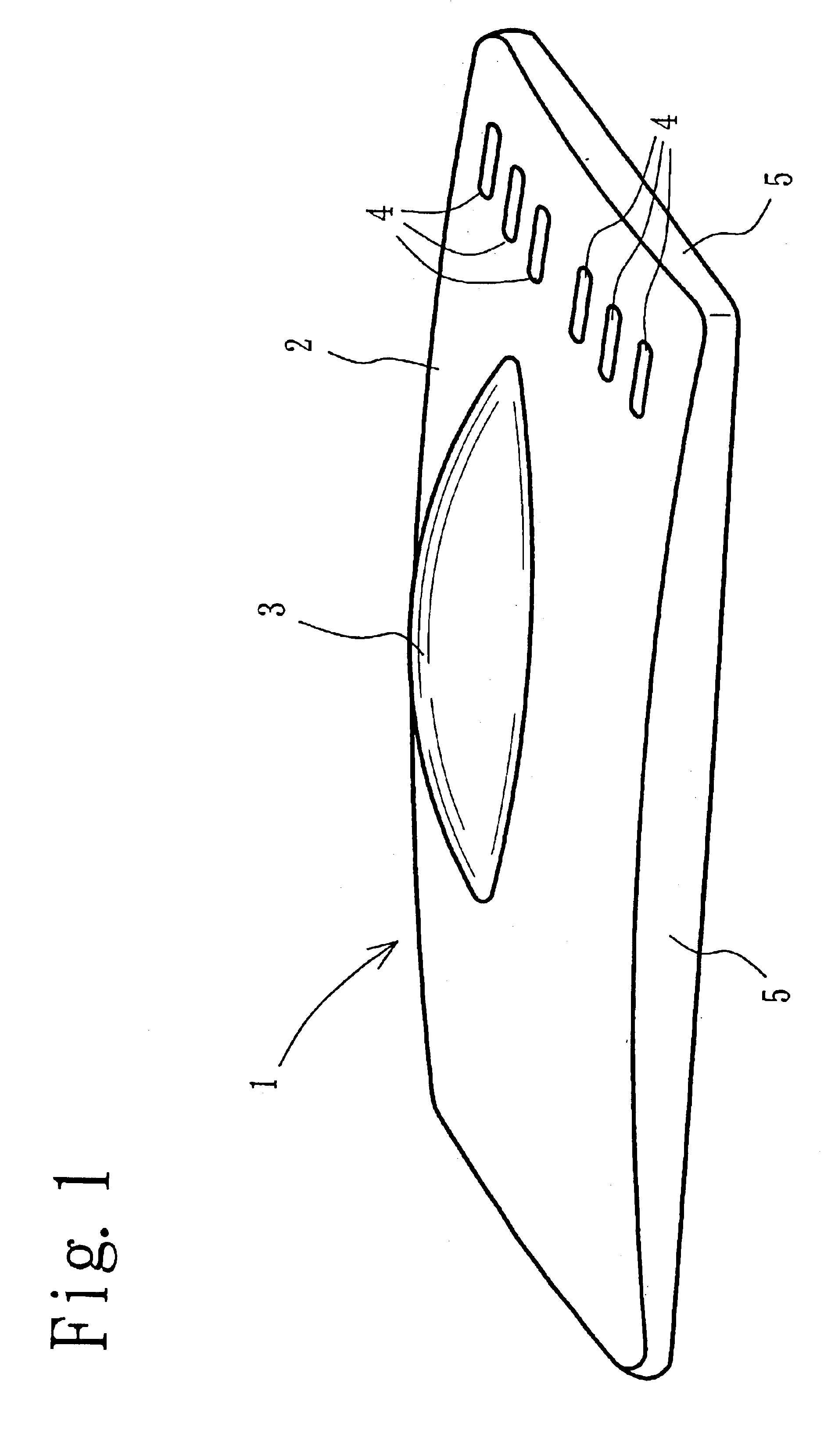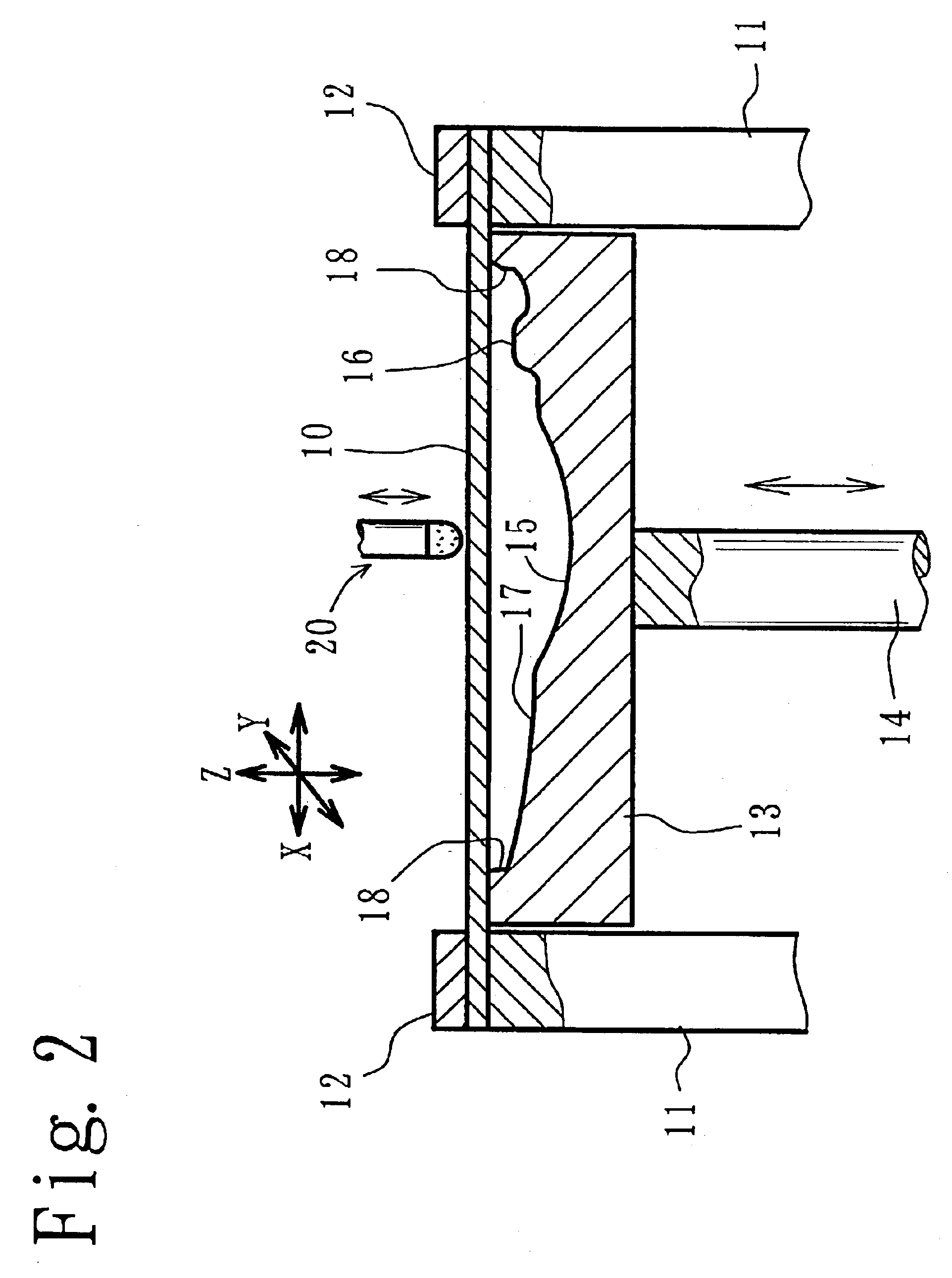Sequential forming device
a technology of forming device and forming surface, which is applied in the field of devices, can solve the problems of striped tool marks on the surface of the plate member, uneven shape of the formed surface, and plate redundancy
- Summary
- Abstract
- Description
- Claims
- Application Information
AI Technical Summary
Benefits of technology
Problems solved by technology
Method used
Image
Examples
Embodiment Construction
One embodiment of the present invention will be described with reference to the accompanying drawings. FIG. 1 shows an external appearance of a formed product obtained by the present sequential forming. FIG. 2 shows a principle of a sequential forming device and FIG. 3 is a partially enlarged cross-sectional view showing a principle of the sequential forming in a forming concave area. FIG. 4 is a view explaining a contour line described by a contacting section between a plate member and an upper pushing member. FIG. 5 is a partially enlarged cross-sectional view showing a principle of the sequential forming in a forming convex area. FIG. 6 is view showing a flexible member in a tip section of the pushing member. FIGS. 7 and 8 are views respectively showing the other embodiment of the flexible member.
Referring first to FIG. 1, a bonnet 1 is a sequential forming product of the present invention formed into a three-dimensional shape which becomes a surface shape of an automobile bonnet...
PUM
| Property | Measurement | Unit |
|---|---|---|
| stress concentration | aaaaa | aaaaa |
| temperature | aaaaa | aaaaa |
| flexible | aaaaa | aaaaa |
Abstract
Description
Claims
Application Information
 Login to View More
Login to View More - R&D
- Intellectual Property
- Life Sciences
- Materials
- Tech Scout
- Unparalleled Data Quality
- Higher Quality Content
- 60% Fewer Hallucinations
Browse by: Latest US Patents, China's latest patents, Technical Efficacy Thesaurus, Application Domain, Technology Topic, Popular Technical Reports.
© 2025 PatSnap. All rights reserved.Legal|Privacy policy|Modern Slavery Act Transparency Statement|Sitemap|About US| Contact US: help@patsnap.com



